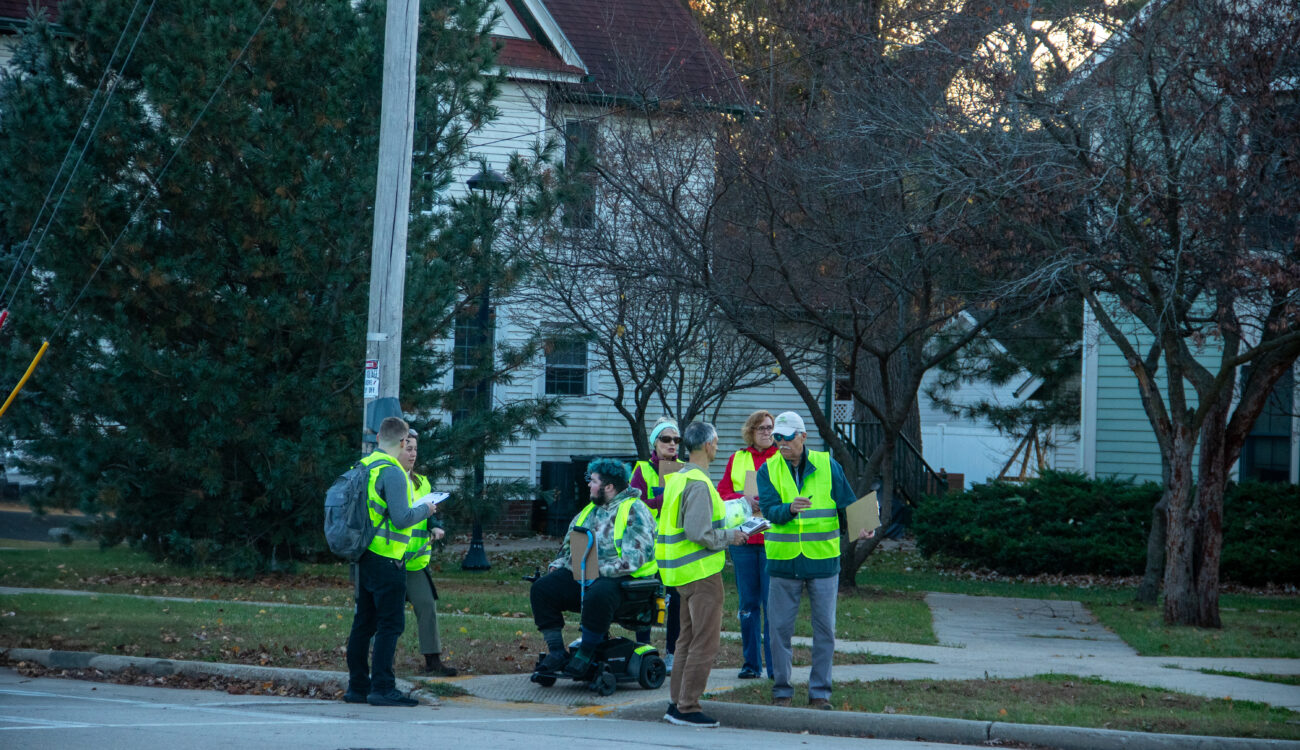
Building A Better Beloit
Our fall intern Aidan from Beloit College shares his suggestions on how to build a better Beloit for cyclists and pedestrians.
During the Fall 2024 semester, I undertook an internship with the Wisconsin Bike Fed to strengthen my knowledge of urban planning and supplement my education in political science and environmental studies. Over the course of the internship, I employed research methods, writing skills, interviews, and event planning to analyze the urban environment of Beloit, Wisconsin. I found that Beloit has the skeleton to build a walkable environment, but is ultimately held back by funding. Furthermore, the cyclist and pedestrian experience in Beloit is severely lacking, with poor infrastructure that often places pedestrians and cyclists in the same space as vehicles.
First, I completed a comprehensive analysis of crash data in Beloit. I found that the areas with the most crashes and of highest danger to pedestrians were state highways and wide roads, both of which Beloit has a lot of. However, even though many of these roads are state highways, the city of Beloit does have an ability to make changes. For example, during an interview with TJ Nee of SLATS (Stateline Area Transportation Study), TJ noted that there are proposals to implement a road diet on Highway 51, which plows right through Beloit’s downtown area.TJ also reported that Beloit’s biggest issue is four lane roads that should be two lane roads, a finding which is supported by crash data in Beloit.

I also conducted an analysis of the urban environment surrounding Todd Elementary School. This elementary school sits next to Milwaukee Road, which has a high volume of traffic. Much like other spaces in Beloit, its area is sparse in features to make the road safer for pedestrians. While this area was not of note in the crash data findings, there were a number of small changes in this area that would make it significantly safer for children. This report found that there is a lot of opportunity for small changes in Beloit that would make a big difference for pedestrian safety; such as flashing yield signs or newly painted crosswalks.
Later in the internship, I conducted an interview with Bill Frisbee, who is the Public Works Director for the City of Beloit. The main takeaway from this interview was that city planning projects in Beloit must be comprehensive and often take several years to be implemented. For example, a signage project for the Peace Trail would require all trail signs in Beloit to be of similar design.
Lastly, I conducted a walk audit as the final piece of this internship; this audit involved the gathering of data from several participants to come up with data and recommendations for Beloit streetscapes. The most significant finding from this audit was that sidewalks and streets in Beloit are falling behind in disability accessibility. Additionally, a number of intersections felt unsafe to cross due to poor urban planning which favors vehicles over pedestrians and cyclists.
The walk audit, along with the findings from the rest of the internship, suggest a few things. First, the City of Beloit, is often short on funding to implement larger scale projects to make the urban environment safer for pedestrians and cyclists. However, this doesn’t mean that new projects can’t be done. Beloit has had success in areas where it implemented relatively cheap measures to make roads safer for all modes of transportation. Two examples are repainting Henry Ave to reduce car lanes from four lanes to two and creating a dedicated bike lane, as well as the flashing yield signs on Maple Ave. There are cheap ways to make roadways safer–this is a good place to start for Beloit as there is immense value in small wins. Beloit has a long way to go in terms of making itself a sustainable, walkable city that people want to move to; but, as it stands today, Beloit already has the space to revamp its urban landscape with small, inexpensive projects.
